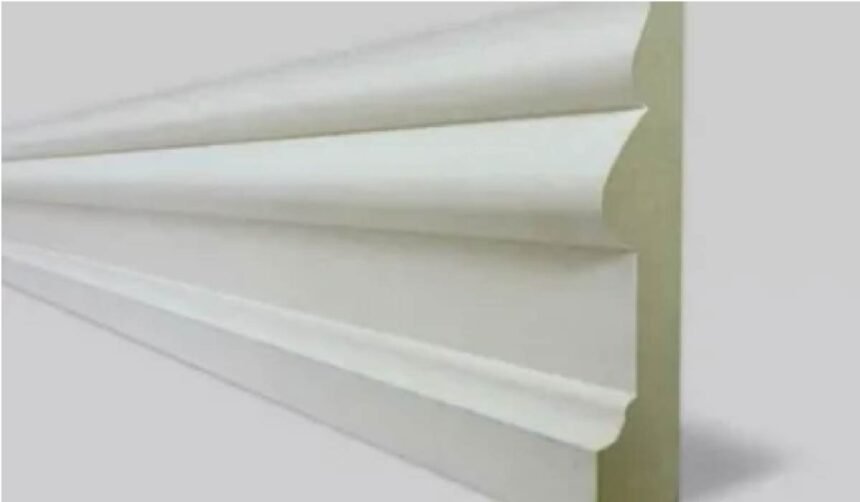Georgian style skirting boards are those elegant curved trims that run along the bottom of your walls in homes built between 1714 and 1830. Think gentle ogee sweeps or bold torus mouldings that hide the join between plaster and floor. They shout with quiet sophistication without ever raising their voice. Nothing else quite nails that period look.
Picture this: you have spent months sanding floorboards and picking paint shades, only for the room to feel half dressed. One strip of properly proportioned Georgian-style skirting boards and suddenly every corner sings in harmony. It is the difference between a house and a home that whispers history. Ready to discover why your walls deserve this upgrade?
What Makes Skirting Georgian?
Georgian-style skirting boards come from the golden age of British architecture between 1714 and 1830. Builders loved clean lines and gentle curves that made rooms feel taller and grander. Forget flat modern strips, these pieces boast ogee or torus shapes carved with quiet confidence. They turn a plain wall into a proper period statement.
Think of them as the polite handshake between floor and plaster. Heights usually run from 15 cm in bedrooms up to 30 cm in entrance halls always in proportion to the ceiling. Paint them crisp white and the whole space lifts. Spot one in a real Georgian house and you will never settle for less again.
Why Heritage Owners Choose Georgian Style Skirting Boards
Heritage owners pick Georgian-style skirting boards because they lock in the true spirit of an old house. Flat modern trim screams 1990s these curves whisper 1780s elegance. Estate agents swear a proper match can lift the asking price by three to five percent. Plus the boards hide drafts and echo in solid wall homes.
Walk into a restored Georgian townhouse and your eye travels smoothly from floor to ceiling. The skirting acts like a frame on a masterpiece. It protects plaster from chair knocks and mops. Skip it and the room feels unfinished no matter how perfect the cornice.
- Boosts resale value with period accuracy
- Shields walls from bumps and scuffs
- Cuts noise and cold in thick stone buildings
- Meets Grade II listing approval demands
- Pairs perfectly with original sash windows
- Turns tired rooms into magazine features
Deep Dive: Pick the Right Curve
Georgian style skirting boards live or die by their curves. A single ogee gives subtle flow while a double ogee shouts grandeur. Measure your ceiling height first then choose a profile that flatters the room. Too tall in a low space and you squash the air too short in a grand hall and it looks stingy.
Grab a tape and sketch the wall on paper. Georgian style skirting boards should hit one tenth of the wall height give or take two centimetres. Test a sample length against the plaster before you buy a van-load. One wrong curve and the whole restoration feels off.
Hallways and Entrances
Georgian style skirting boards in hallways need presence from the moment the door opens. Go for a 23 cm double ogee in crisp white to greet guests with confidence. Paint the wall above in a soft contrast so the curve pops. A scuff-resistant eggshell finish laughs at muddy boots.
Drawing Rooms and Libraries
Drawing rooms crave Georgian style skirting boards that match the fireplace mantle. A 25 cm torus in pale stone paint ties the scheme together. Add picture rail at 2.1 metres for perfect balance. The deeper profile hides speaker cables without ruining the line.
Bedrooms and Snugs
Bedrooms suit softer Georgian style skirting boards around 15 cm single ogee keeps the mood calm. Choose primed MDF for quick painting or oak for warmth underfoot. Run a discreet cable chase behind the bedside lamps. The lower height leaves space for tall headboards.
Material Match-Up for Period Purity
Georgian style skirting boards deserve materials that last as long as the house itself. Pine takes paint like a dream and costs less than a takeaway curry per metre. MDF arrives primed and ready for eggshell but hates damp bathrooms. Reclaimed timber tells a story, yet needs careful checking for woodworm.
Think about the room before you order. Solid oak warms a study but swells in kitchens unless you seal it properly. Accoya laughs at rot and carries a fifty-year guarantee perfect for basements. Match the grain direction on every length or the join lines shout amateur from the doorway.
Room-by-Room Styling Gallery
Georgian style skirting boards shine brightest when they suit the room’s purpose. A tall double ogee in the hallway sets the tone before anyone steps inside. Paint it Farrow and Ball Setting Plaster for instant warmth. Keep the height bold so the space feels generous, not cramped.
Snugs and bedrooms beg for calmer lines. A 15 cm single ogee in soft grey lets furniture breathe. Run a hidden cable chase behind lamps or smart speakers. The lower profile stops tall beds from fighting the trim and keeps the vibe cosy.
Conclusion
It’s your Georgian house that deserves skirting that sings its true song. Pick the right curve height and material then watch tired rooms turn into timeless gems. Every mitred corner and painted sweep brings history alive under your roof. Pop the kettle on again and start measuring tonight. Your walls are waiting for that perfect Georgian style skirting board finish.








